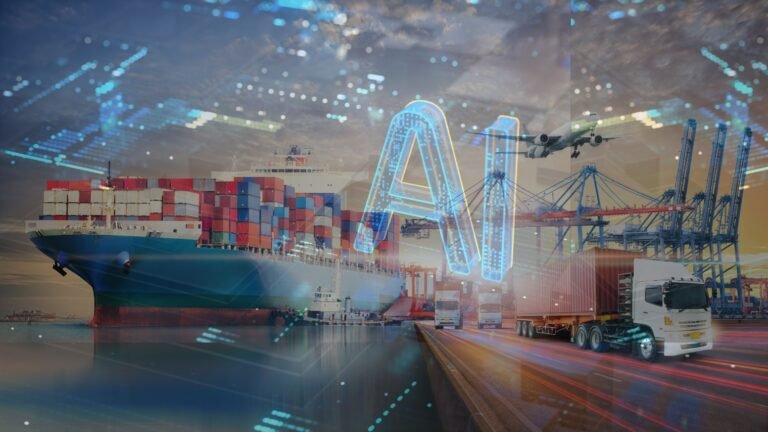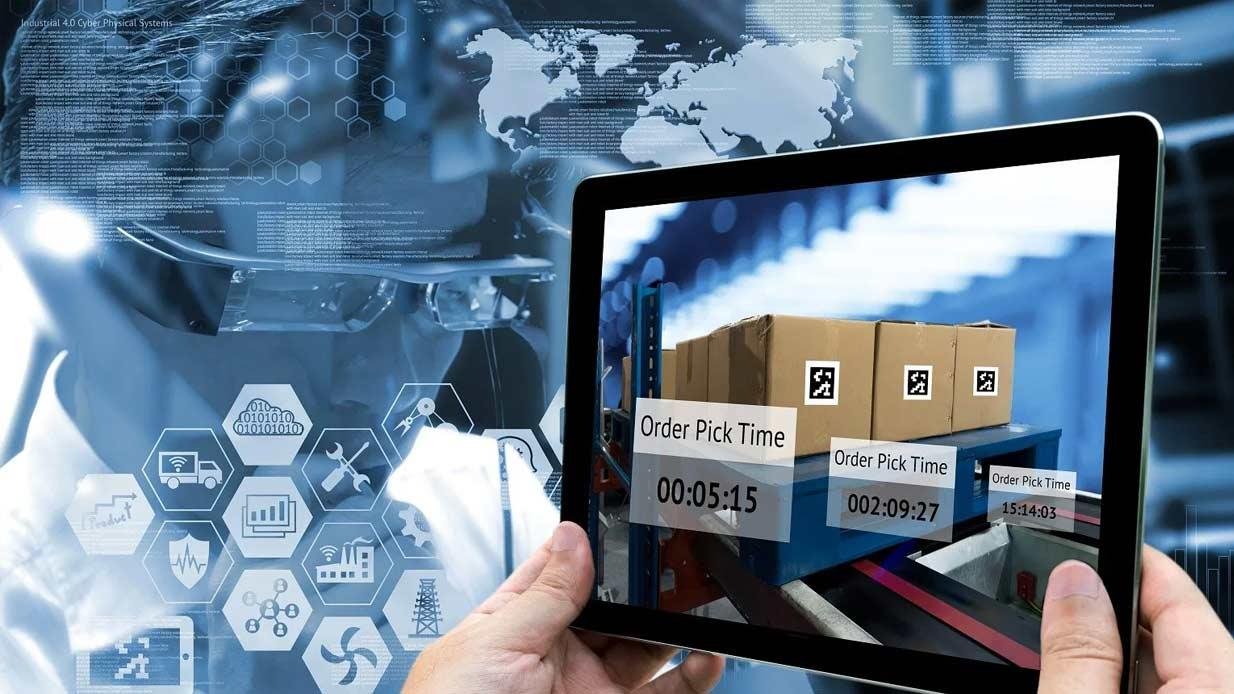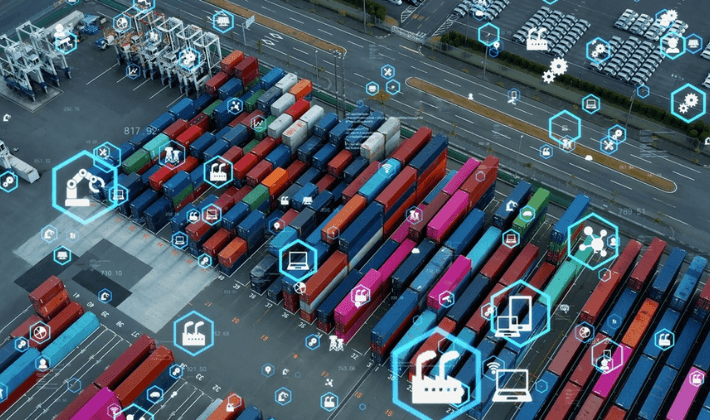
Introduction
The logistics industry is undergoing a massive transformation, driven by advancements in artificial intelligence (AI). As companies face increasing demand for faster deliveries, lower costs, and improved customer experiences, AI is stepping in to streamline operations, enhance decision-making, and drive efficiency throughout the supply chain. But how exactly can businesses harness AI to optimize logistics? In this article, we’ll dive into the role of AI in logistics and explore how it’s reshaping the future of this critical industry.
The Importance of Optimization in Modern Logistics
Optimization is the backbone of logistics. Companies are constantly seeking ways to improve route planning, reduce costs, and maximize efficiency in an environment where consumer expectations for fast and reliable deliveries are at an all-time high. Without efficient logistics operations, businesses risk losing customers, facing higher operational costs, and contributing to environmental damage through wasted resources and excessive carbon emissions.
However, the complexity of modern supply chains presents challenges. Traditional methods often fall short when it comes to addressing dynamic changes like fluctuating fuel costs, last-minute route changes, and unpredictable demand. This is where AI steps in, offering a solution that not only optimizes logistics processes but also learns and adapts over time.

How AI Enhances Logistics Optimization
AI and Predictive Analytics
AI’s ability to analyze vast amounts of data is a game-changer for logistics. Predictive analytics powered by AI can forecast demand more accurately, ensuring that inventory levels are optimized. AI algorithms can identify patterns in customer behavior, weather conditions, and past sales data to predict future needs. This helps businesses avoid stockouts, reduce excess inventory, and minimize wastage.
For example, AI systems can anticipate peak seasons or sudden spikes in demand and adjust inventory levels accordingly. These systems continuously improve their predictions by learning from new data, helping companies stay one step ahead.
AI in Route Planning and Scheduling
AI-driven route optimization is revolutionizing the way logistics companies plan and execute deliveries. AI analyzes real-time data such as traffic conditions, weather forecasts, and fuel consumption to suggest the most efficient delivery routes. This results in shorter delivery times, reduced fuel usage, and lower operational costs.
Imagine a delivery truck stuck in traffic on its way to a warehouse. An AI system could automatically recommend an alternate route that bypasses the congestion, ensuring on-time delivery and reducing delays. These systems also optimize scheduling, allowing logistics companies to make the most of their fleet and reduce the number of vehicles on the road.
AI for Warehouse and Inventory Management
AI plays a crucial role in automating warehouse operations. AI-powered robots and systems are used to streamline the sorting, picking, and packing processes in large warehouses. These systems work faster and more accurately than humans, significantly reducing the risk of human error. AI-driven tools can also monitor inventory levels in real-time and automatically reorder products when stocks run low, ensuring that businesses maintain optimal stock levels.
For instance, Amazon uses AI-enabled robots to automate sorting and restocking in its massive warehouses. These robots work round the clock, boosting efficiency and speeding up the order fulfillment process.

Real-World Examples of AI in Logistics
Several major players in the logistics industry are already leveraging AI to improve operations. For instance, Amazon uses AI for everything from optimizing delivery routes to automating warehouse operations. Their advanced AI systems allow them to predict demand patterns and adjust inventory accordingly, ensuring that customers receive their orders as quickly as possible.
Similarly, UPS uses AI-powered route optimization to minimize fuel consumption and delivery times. Their system, known as ORION (On-Road Integrated Optimization and Navigation), helps drivers plan the most efficient routes, considering factors like traffic, package volume, and customer locations.
Even smaller businesses are benefiting from AI-driven tools. AI-based logistics platforms offer cloud solutions that help companies of all sizes optimize their supply chains, whether through route planning, inventory management, or demand forecasting.

The Future of AI and Logistics Optimization
AI-Powered Autonomous Vehicles
One of the most exciting innovations in logistics is the development of autonomous vehicles. AI is at the heart of these vehicles, enabling them to navigate roads, avoid obstacles, and deliver goods with minimal human intervention. Autonomous trucks and drones have the potential to transform the logistics industry by reducing labor costs, increasing delivery speed, and improving safety.
While the widespread adoption of autonomous vehicles is still a few years away, companies like Tesla and Waymo are already testing AI-powered trucks that could soon be part of the logistics landscape.
AI in Supply Chain Sustainability
As businesses become more conscious of their environmental impact, AI is playing a key role in enhancing supply chain sustainability. AI helps companies reduce their carbon footprint by optimizing fuel usage, reducing waste, and improving energy efficiency. For example, AI-powered systems can analyze data from delivery trucks to identify areas where fuel consumption can be minimized, leading to more eco-friendly operations.
AI is also used to create smarter packaging solutions, ensuring that goods are shipped in the most efficient way possible, reducing excess packaging material and saving on transportation costs.
How to Get Started with AI in Logistics
If you’re looking to integrate AI into your logistics operations, there are a few key steps to consider:
- Identify areas of improvement: Look at where your logistics processes are currently lagging. Are there inefficiencies in route planning, inventory management, or warehouse operations?
- Invest in AI solutions: Consider adopting AI-powered software or platforms tailored for logistics optimization. Many providers offer scalable solutions that cater to businesses of all sizes.
- Start small: You don’t need to overhaul your entire logistics system all at once. Begin by implementing AI in one area, such as route planning, and gradually expand its use.
- Monitor and adapt: As with any new technology, it’s important to track AI’s performance and make adjustments as needed to ensure it delivers optimal results.
For more information on AI solutions for logistics, check out this guide.
Conclusion
AI is undeniably transforming the logistics industry, offering new ways to optimize operations, reduce costs, and enhance customer satisfaction. From predictive analytics to route optimization, AI is making logistics faster, smarter, and more efficient. As we look to the future, the continued integration of AI into logistics promises to unlock even more potential, from autonomous vehicles to sustainable supply chains. Now is the time for businesses to explore how AI can optimize their logistics processes and stay competitive in this rapidly evolving landscape.